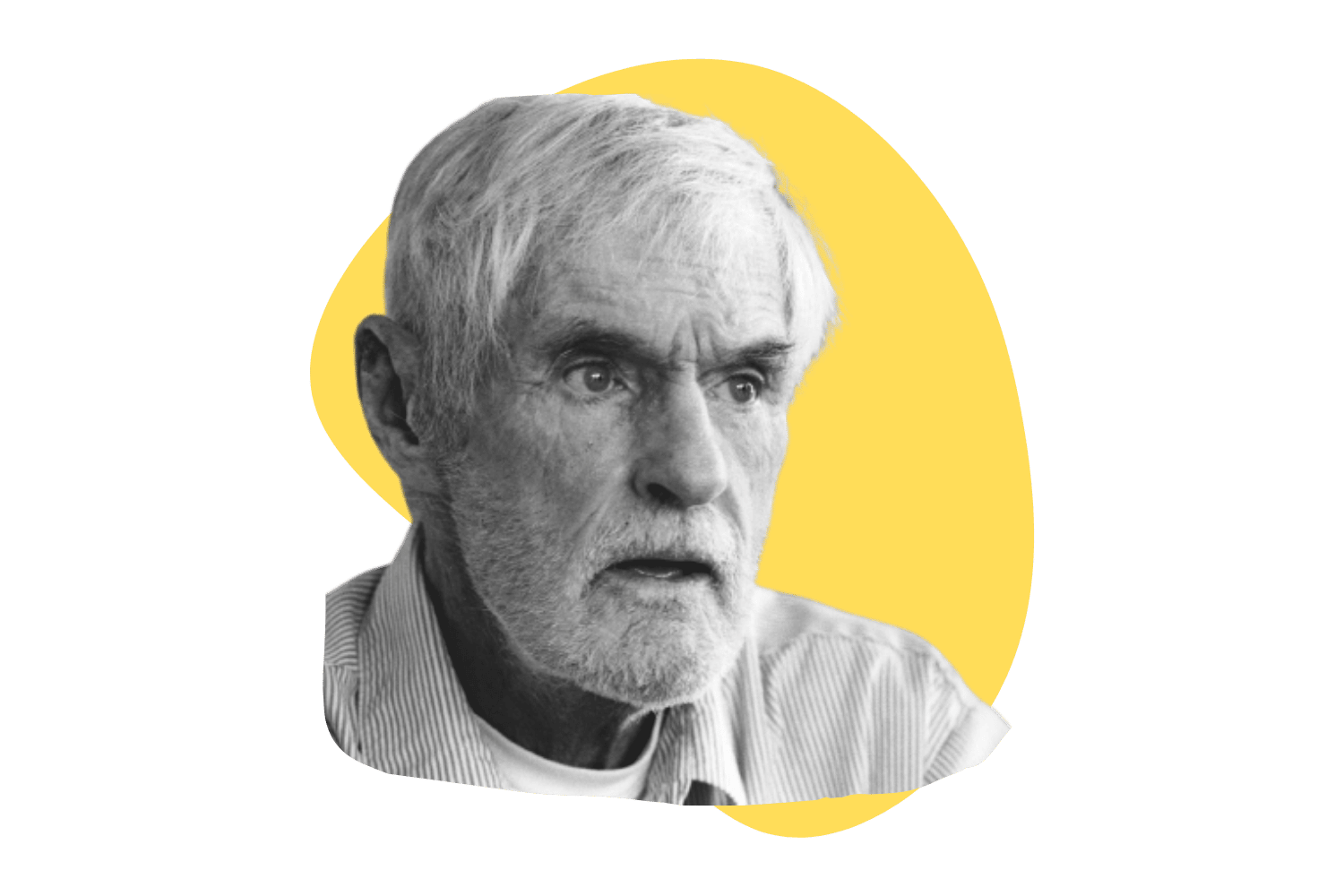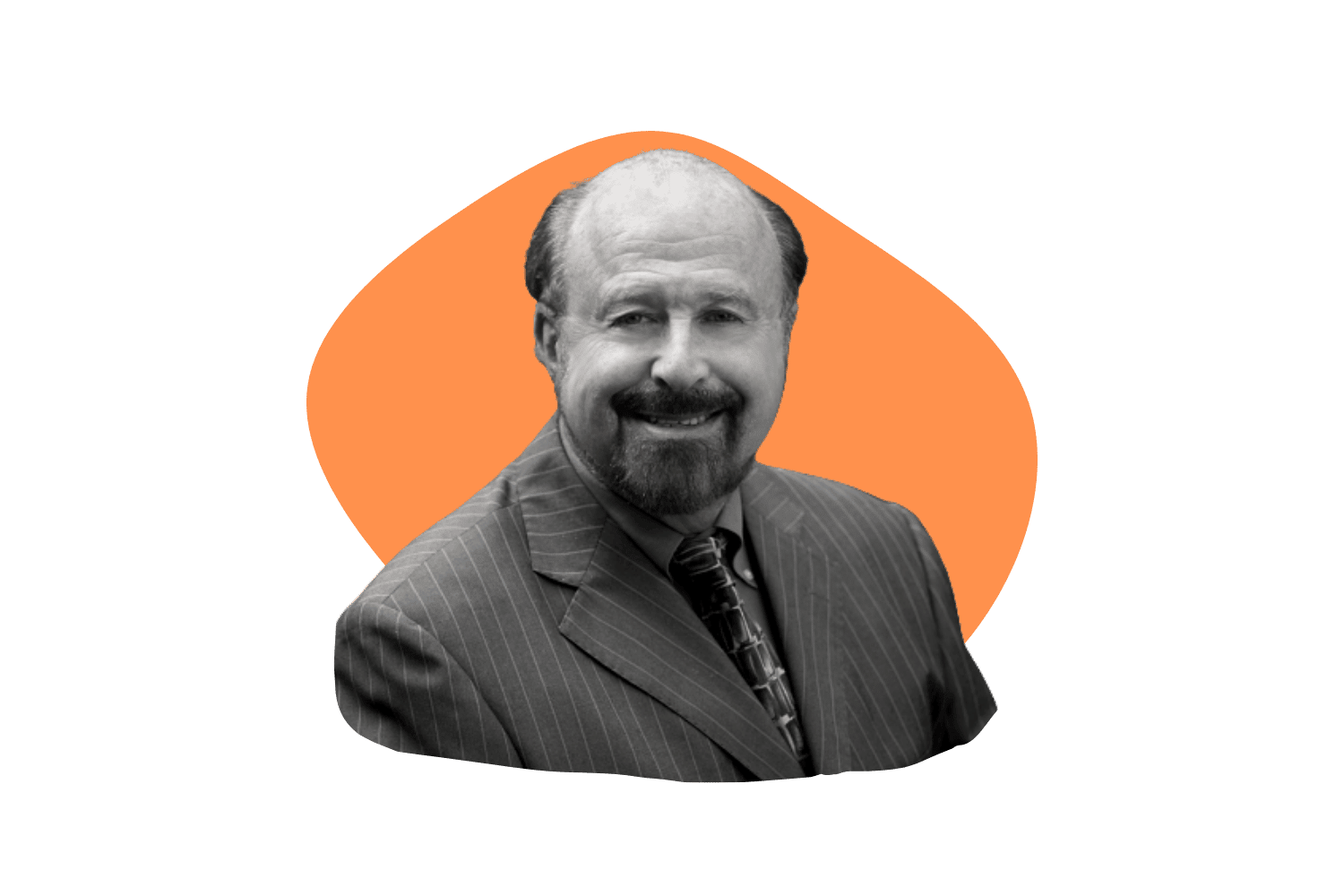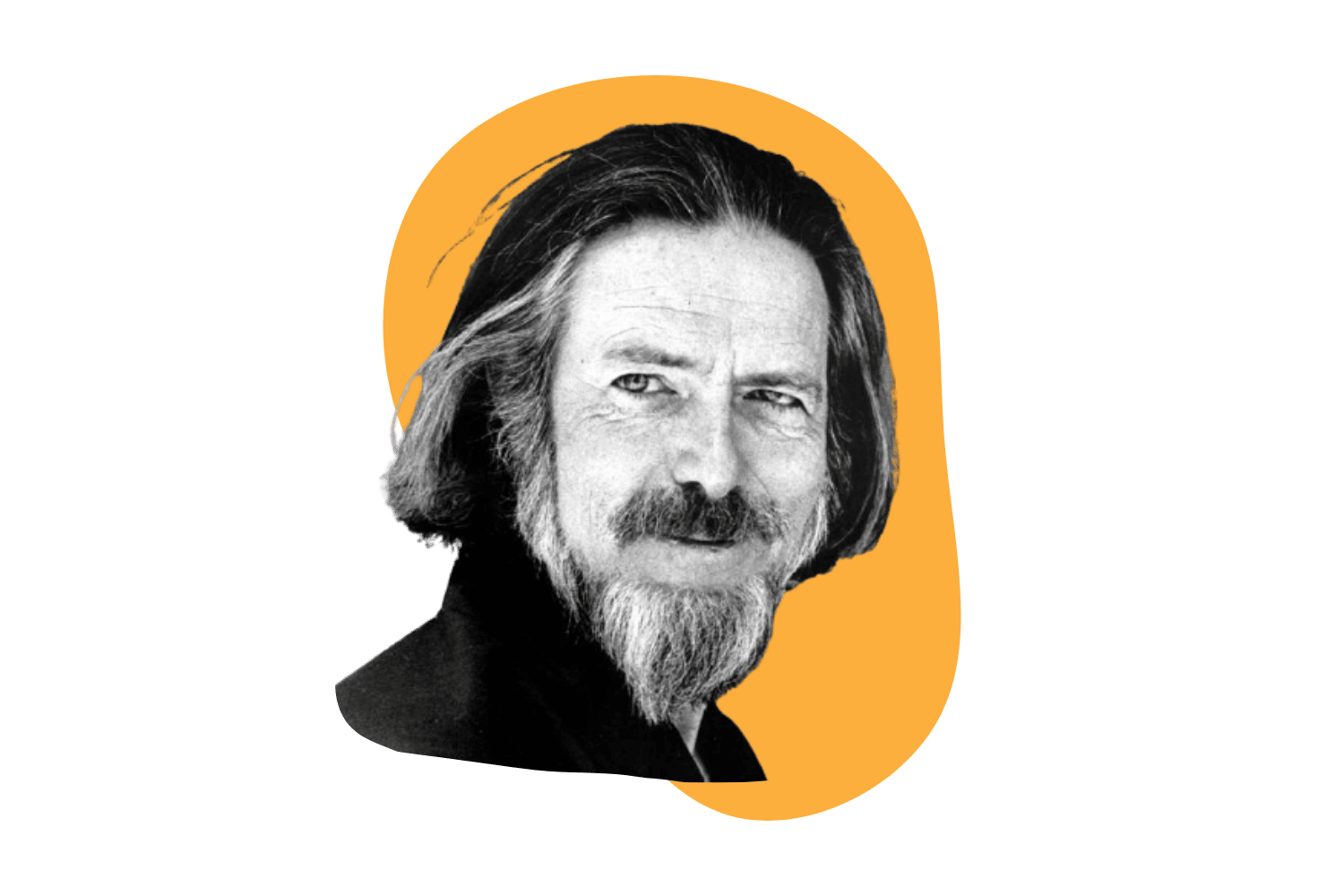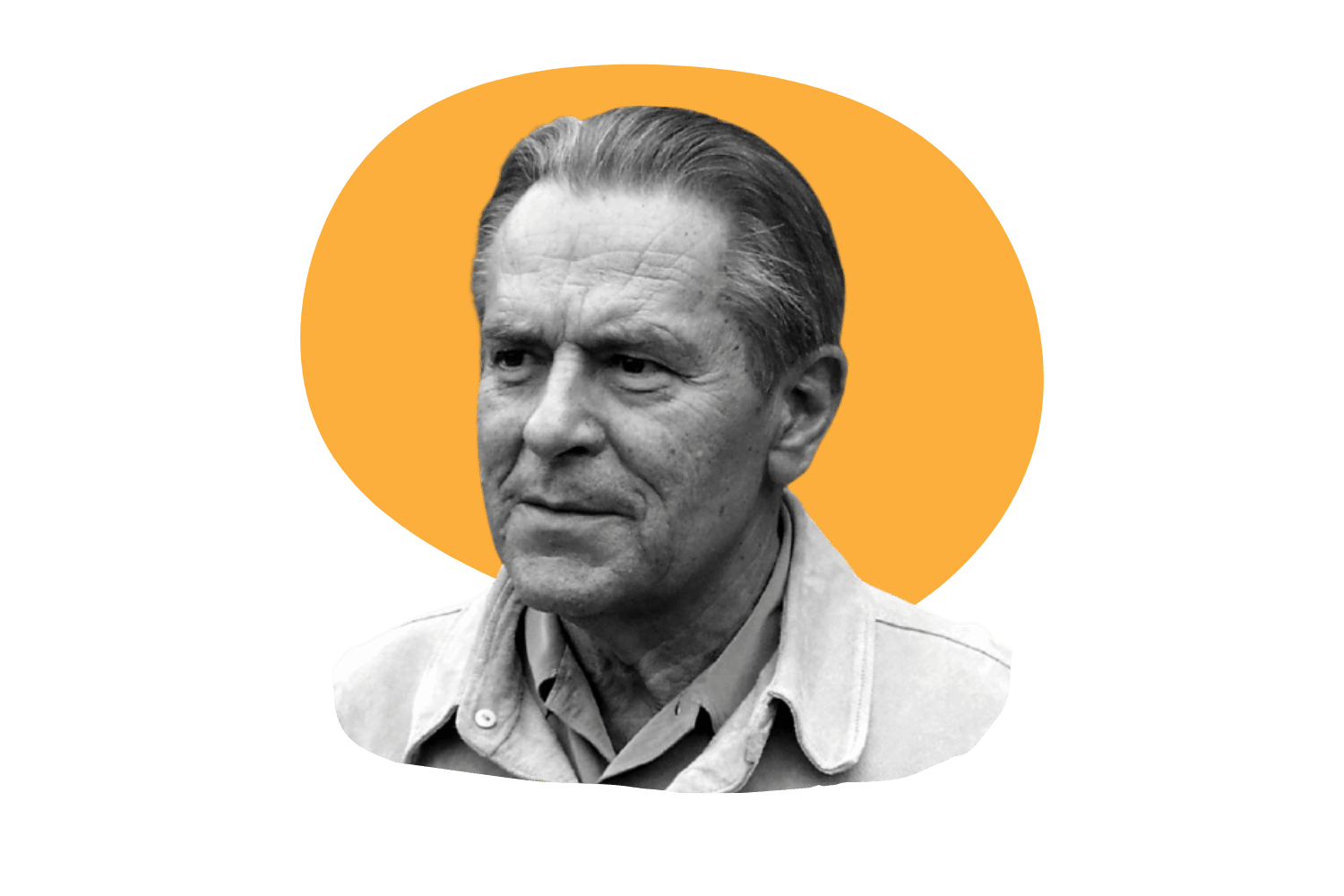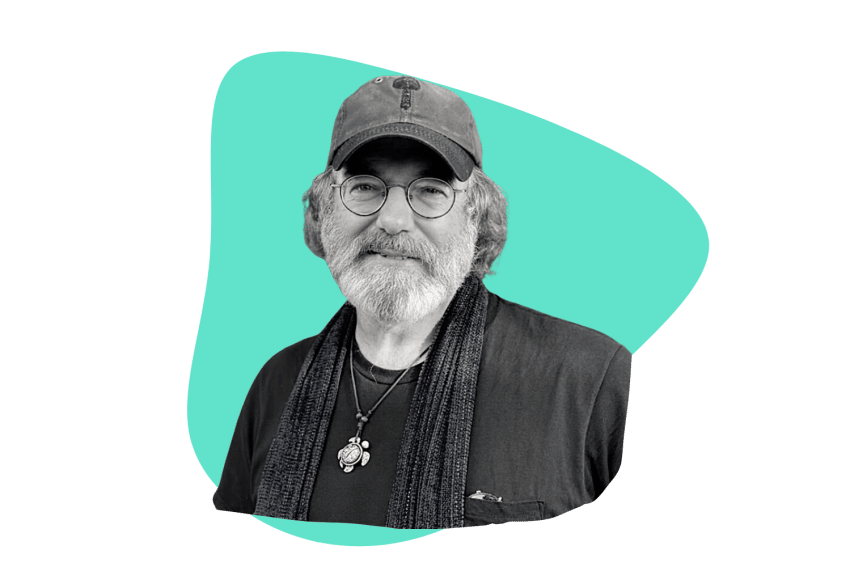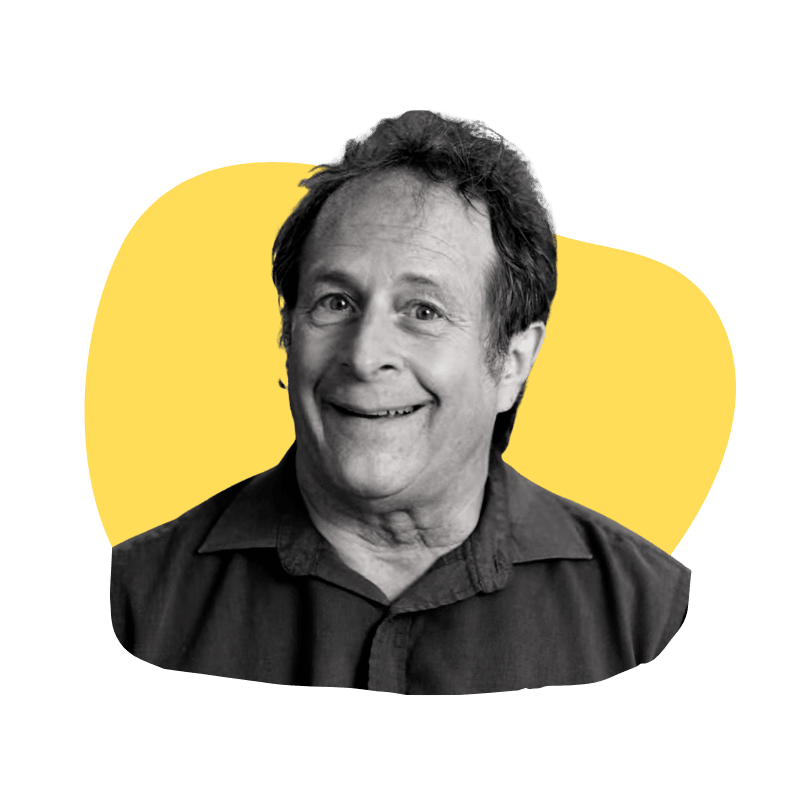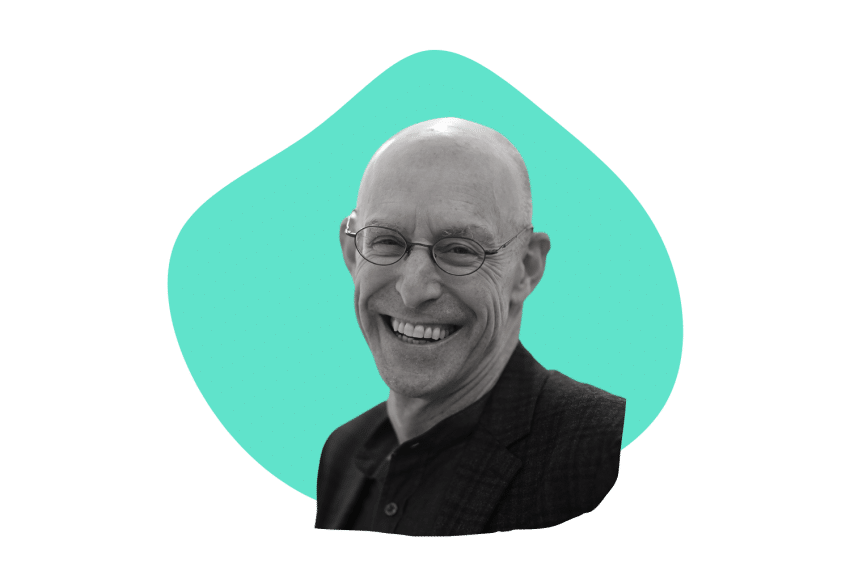Carl Jung: Archetypes & The Collective Unconscious
“Until you make the unconscious conscious, it will direct your life and you will call it fate.”
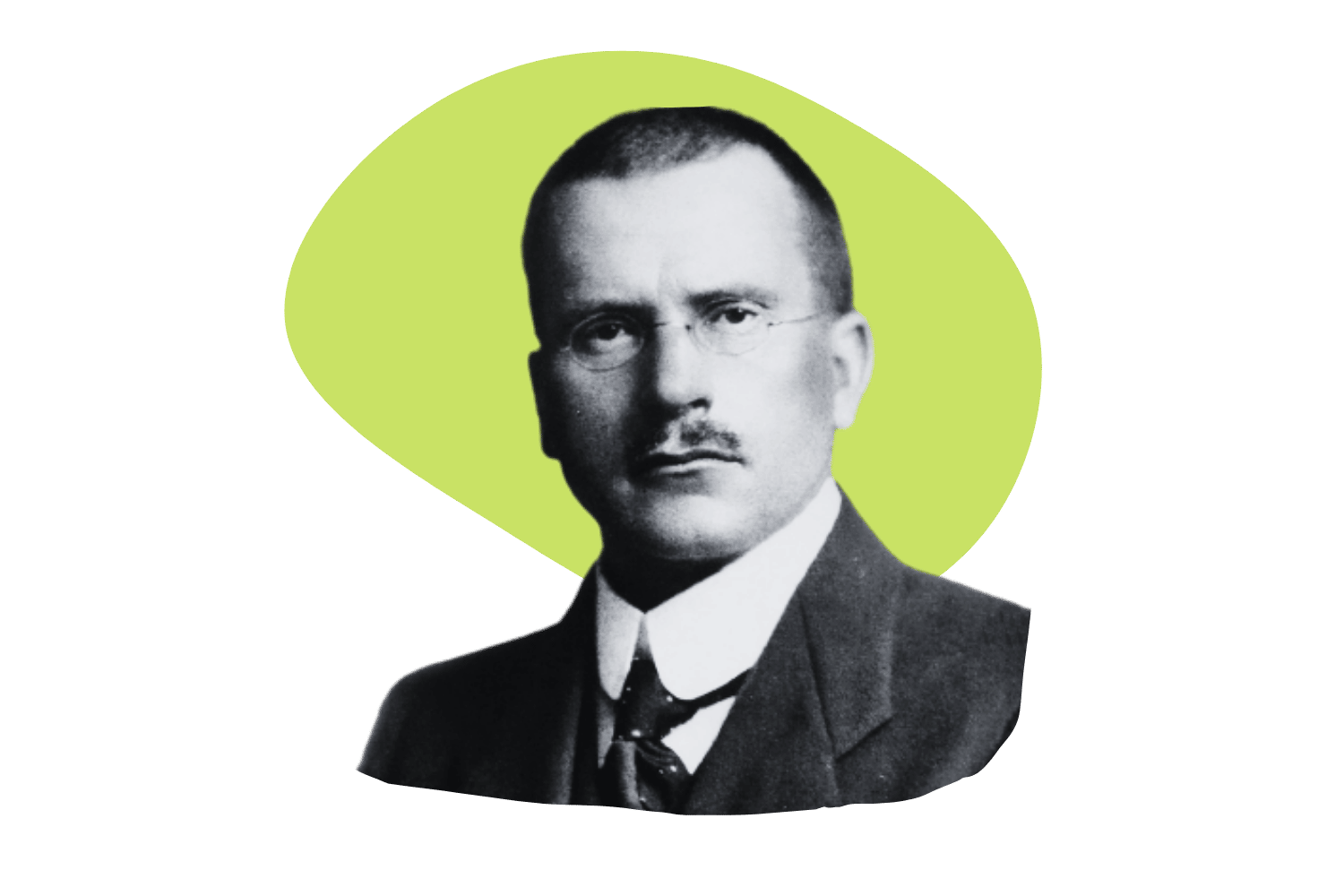
Carl Jung was a Swiss psychologist, famous for coining terms like extroversion and introversion, collective unconsciousness, archetypes, individuation, synchronicity, and shadow.
He developed the model of analytical psychology (Jungian Analysis) — which was well ahead of his time and is more reflective of modern therapy.
His models are often used as the basis for psychedelic-assisted therapy today.
Jung was incredibly intelligent but also suffered greatly. Throughout his life, Jung experienced bouts of schizophrenia and delirium. This was something he embraced in his late 30s after deciding it was an excellent learning opportunity.
From this self-experimentation came some of Jung’s most interesting and contested ideas on the origin of human consciousness.
| Birth & Death | 1875 – 1961 |
| Personality Type | INFJ | 5w4 |
| Occupation | Psychologist |
| Nationality | Switzerland |
The Life of Carl Jung
Carl Gustave Jung was born in 1910 in Kesswil, Switzerland.
Growing up, his mother was eccentric and depressed. His father was a pastor.
He wrote about his early childhood in his memoir. He describes his childhood as lonely but was enriched by a vivid imagination. He viewed himself as having two personalities — he believed he was both a schoolboy living in the current era and an influential and authoritarian man from the 18th century.
Early on, Jung noticed pathological behavior in both his parents, which he often tried to resolve. He was especially concerned with his mother’s hysteria and depression and his father’s failing belief in religion.
When he was older, he went to study medicine and psychology at the universities of Basel (1895–1900) and Zürich (1902).
His fascination (and obsession) with consciousness led him to work alongside Sigmund Freud, who became his mentor for several years.
Jung was later named the head of the International Psychoanalytical Association, as per the request of Freud.
Jung was a polymath — mastering several languages, studying alchemy, art, and dozens of other topics, and of course his accomplishments in psychology and medicine — of which there were many.
Jung was particularly accomplished, having earned honorary doctorates from nearly a dozen universities:
- Clark University (1909)
- Fordham University (1912)
- Harvard University (1936)
- University of Allahabad (1937)
- University of Benares (1937)
- University of Calcutta (1938)
- University of Oxford (1938)
- University of Geneva (1945)
- Swiss Federal Institute of Technology (1955)
Jung’s Submersion Into Madness
Throughout Jung’s life, he experienced exceptionally strange and vivid dreams. When he was 38, he had what he deemed a “confrontation with the unconscious” — which consisted of disturbing visions and voices not dissimilar to the symptoms of schizophrenia.
Instead of letting this set him back, he viewed it as a positive and sought to learn from it and study it. He encouraged these visions and recorded everything. He spent several years in isolation documenting his experiences.
Over the following 15 years, Jung compiled what was eventually published as the Liber Novus or the Red Book. This book was very controversial, especially for the time. It wasn’t published until 2009, when his grandson, Ulrich Hoerni, decided the world was ready for it.
His Later Years
Following his isolation period, Jung came back into the public eye with his work on Psychological Types (1921) which was one of his most influential books. He spent the next 10+ years publishing books and articles and traveling.
He traveled to England, The United States, East Africa, and India — giving lectures and studying various cultures. He was especially inspired on his trip to India, where he first encountered the concepts behind Hinduism. On this particular trip, Jung experienced a bout of delirium and spent 2-weeks in a Calcutta hospital. This was his last trip outside of Europe.
Jung later became a professor of medical psychology at the University of Basel in 1943 but resigned shortly afterward because of a heart attack. He lived a much more private life after this. He spent his time writing various books on archetypes and consciousness before eventually passing away on June 6, 1961.
Carl Jung’s theories left a permanent mark on our understanding of psychology and consciousness.
His theories weren’t as popular as Freud’s — most likely because many of his ideas could be deemed pseudoscientific, which didn’t mesh well with a world obsessed with the scientific method. He also never wrote for the layman, so his works were much more difficult to disseminate than Freud, who frequently communicated in simpler terms.
Jung vs. Freud
Freud and Jung shared a passion for understanding the unconscious. Freud was a mentor for Jung and saw him as his predecessor. The two collaborated in their work in uncovering the origin of consciousness.
Jung discovered a concept he coined the collective unconscious, which did not mesh with Freud’s idea of the unconscious. This made it impossible for Jung to continue collaborating with his mentor. Freud maintained a focus on psychoanalysis and he refused to accept Jung’s theory.
In 1912, Jung publicly criticized Freud’s theory on the Oedipus complex and his focus on sexuality as a driving factor of the psyche. This inextricably fractured the relationship, and Jung went on to develop his own model of consciousness.
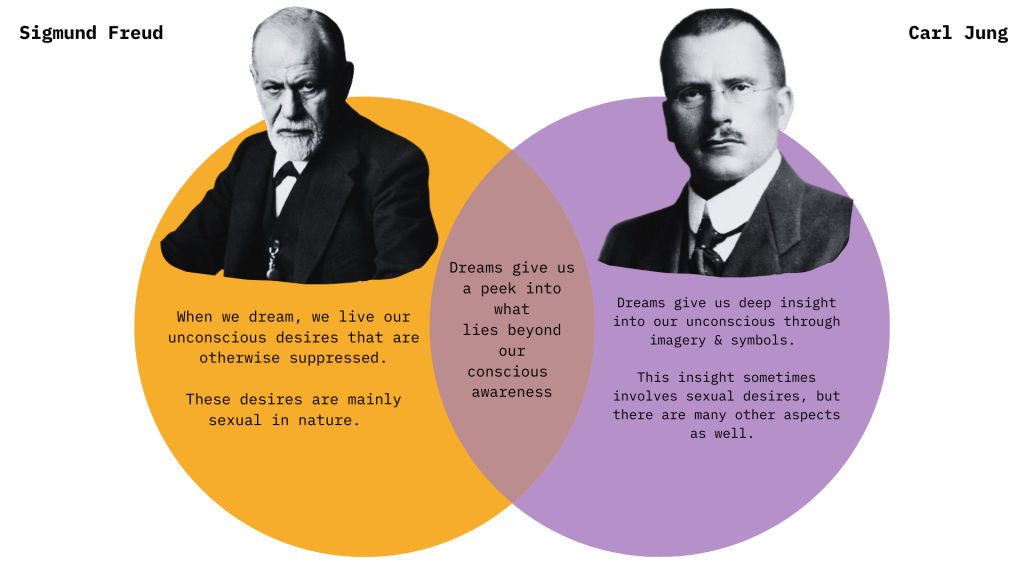
Differences in Ideology
Jung agreed with Freud that our past experiences, especially during early childhood, affect our behavior — but he also believed our aspirations for the future had an impact as well. He believed the human psyche is largely influenced by collective unconsciousness through a sort of “primordial imagery.”
Jung disagreed with Freud regarding the role of sexuality. He viewed the libido as more than just sexual energy but as a form of generalized psychic energy. This psychic energy is needed to motivate an individual in ways beyond sexual. He saw it as a drive for spirituality, intellectualism, and creativity.
What Was Jung’s Philosophy??
Jung published an extensive library of works and is the founder of analytical psychology. He developed his theories through his mentorship under Freud, his trip to India (and subsequent exposure to Hinduism), and his own struggles with sanity and mental health.
Through his publications, he defined a variety of criteria for analyzing and treating mental health disorders. He was a very visual person and developed many diagrams for his concepts to help explain them. He essentially created a series of “maps” for the human psyche.
A central aspect of his philosophy is the idea of individuation — which is the lifelong psychological process of realizing the self, which includes both conscious and unconscious elements.
He believed that many of the problems of modern life are caused by “man’s progressive alienation from his instinctual foundation.”
An example of this is femininity and masculinity — which he believed are present in both men and women (anima and animus). He saw that the feminine side of men and the masculine side of women were repressed by society and culture. Jung believed this led to a stunting of the full psychological development for both sexes.
Jung rejected the idea that people were born a “blank slate” — and instead suggested the idea of a collective unconsciousness. The collective unconscious refers to the influence of memories and experiences that didn’t happen in the individual’s lifetime. One is essentially born with these memories.
These collective experiences combine with personal experience and upbringing to determine who we are as a person.
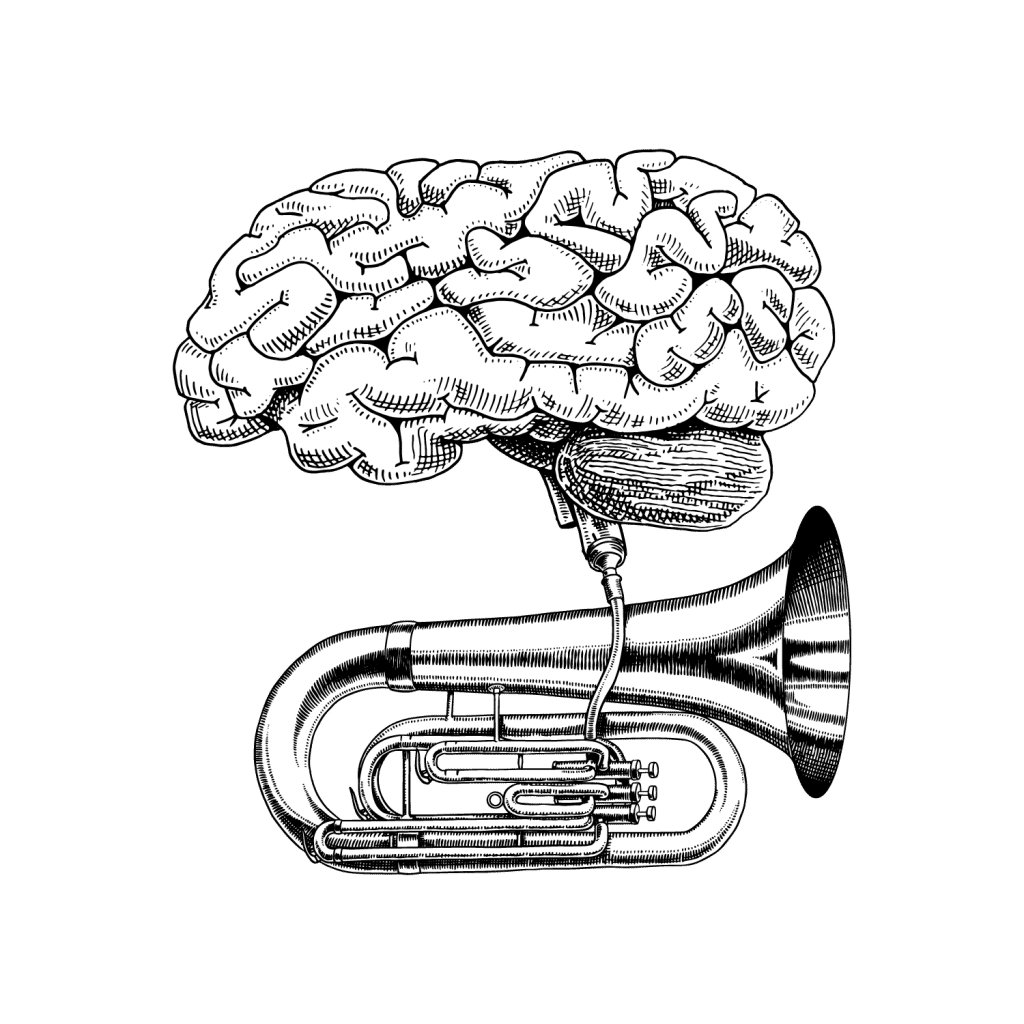
Theory of The Unconscious
There are three interacting systems that form the psyche. There’s the conscious, which is akin to our ego. Then there’s the unconscious, which is broken into our personal unconscious, and the collective unconscious.
Jung believed our ego plays a role in determining who we are and what we feel, but this is dwarfed in comparison to the role our unconscious plays. Most of Jung’s work is focused on understanding and categorizing the unconscious. He developed archetypes and models for understanding and improving the impact our unconscious has on our conscious existence.
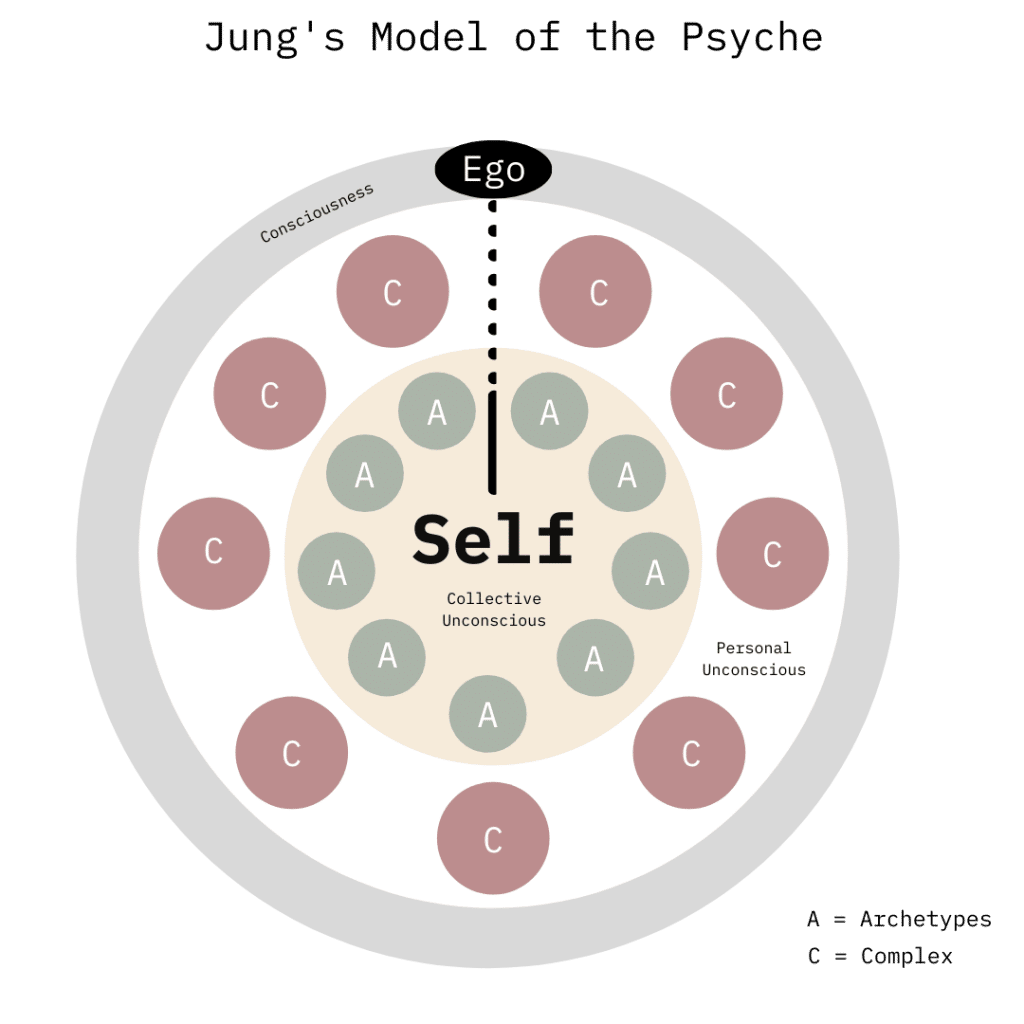
1. Conscious
The conscious is our “field of awareness.”
This is where our ego lives. Jung believed the ego represented conscious thought and identity. It’s responsible for producing the thoughts, memories, and emotions that we’re aware of.
It doesn’t include the thoughts, feelings, or memories we’re unaware of.
2. The Personal Unconscious
The unconscious mind is the part that is inaccessible to the conscious mind but affects behavior and emotion nonetheless.
This section of the unconscious contains forgotten information and repressed memories. This is very similar to Freud’s ideas of repressed childhood experiences and their impact on our psyche.
Jung believed this played a role but that the focus should remain on the present and the future — which was the key to understanding the problem and offering treatment.
3. The Collective Unconscious
This is the deepest part of our unconscious. It has no basis in our personal experiences and is instead inherited genetically. This concept is often referred to as transpersonal consciousness.
This is where the 12 Jungian archetypes come from. Jung believed we inherited these archetypes in the same way we inherit instinctive behavior.
He discovered that people from all different cultures would often share similar imagery in dreams (primordial imagery) and that there were “templates” of human psyches that permeate the entirety of the human race. He believed we’re instilled with mental fragments or patterns that are shared with other members of the human species.
He thought that recognizing these repeating patterns (archetypes) was a representation of consciousness becoming aware of itself.
Jungian Archetypes
Jung spent a great deal of time mapping out the psyche. In one of his books, The Structure of the Psyche (1960), Jung defined four major archetypes that exist in all people.
The 4 Major Jungian Archetypes
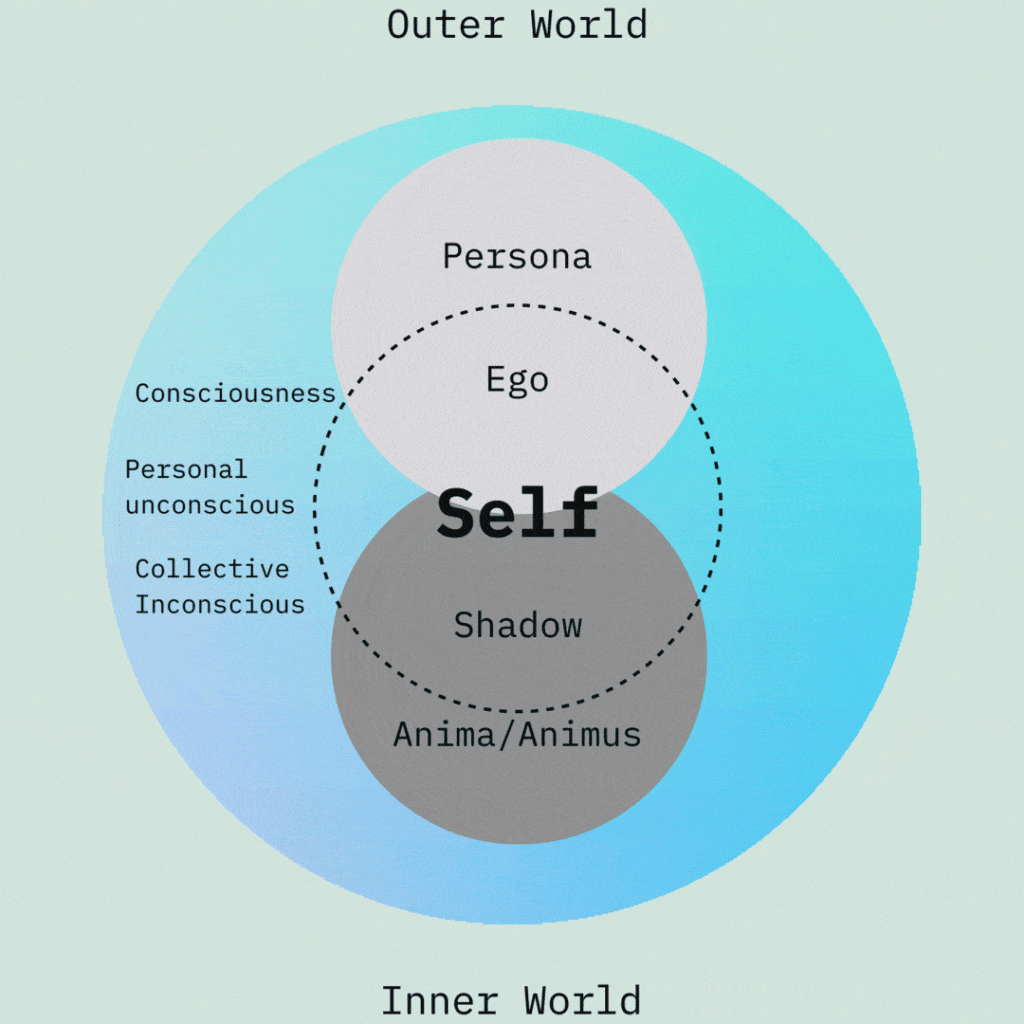
1. The Persona
Also called the “conformity” archetype, the persona refers to our outwardly self — that is, the self we project onto the world. It doesn’t necessarily match the archetype of our true self.
As we present ourselves to the world in a way that’s contradictory to who we really are — leaving behind the negative bits of our true self. These negative traits, which are just as much as part of us as the good traits, form one of the other archetypes, called the shadow.
2. The Shadow
The shadow is the darker, more animalistic side of our unconscious psyche. This concept shares a strong overlap with Freud’s idea of the id.
The shadow is a strong force, forming both our creative and destructive powers.
In order to become conscious of the shadow, there must be a considerable moral effort to recognize the dark aspects of one’s personality.
The shadow plays an important role in balancing the psyche. A weak shadow results in a deficiency personality — someone who becomes overly worried about the opinions of others.
Without a conscious effort to acknowledge the shadow, we will project it onto others. The traits we see in others that we don’t like often come from ourselves.
Jung believed that in order to truly grow as a person, we must learn to acknowledge the relative evil of our nature and exert conscious effort to balance it and integrate it with the rest of our psyche. This is the concept of a form of therapy called “shadow work.” which involves techniques designed to help people confront their shadow and learn how to work with it, rather than trying to repress or ignore it.
Psychedelics are proving to be an invaluable tool for shadow work.
Get Started Examining Your Shadow Today: 100 Shadow Work Journalling Prompts.
3. The Anima/Animus
There are two archetypes here — the masculine (animus) and the feminine (anima).
The anima is a personification of all unconscious feminine psychological tendencies present in men. It’s characterized by the feminine Eros, which is passive and nourishing.
The animus is a personification of all unconscious masculine psychological tendencies present in women. It’s characterized by the masculine Logos, which is the principle of rationality and logic.
These archetypes are found in the collective unconscious rather than our personal unconscious like the shadow. This means these archetypes are harder to identify and face, than the shadow, lying in a much deeper level of consciousness shared by all humans.
When a man integrates the anima, it gives way to Eros, which helps him become a more caring figure (among other things).
When a woman integrates the animus, it gives way to Logos, which helps her become more assertive and deliberate.
4. The Self
The main goal of every human is self-actualization or “individuation,” as he called it. This is the process of distinguishing the self out of each of the conscious and unconscious elements. This creates a sense of unity of experience, not unlike the concept of “enlightenment” or “oneness” from Eastern philosophy.
The 12 Jungian Character Archetypes
Jung also defined 12 character archetypes embodied by all human beings. They represent our basic human motivations that have been derived by the collective unconscious — that is, memories that are shared with other members of the human race.
Everybody has traces of all archetypes, but one will be dominant over the others.
These archetypes are akin to personality types — such as enneagram or Myers Briggs (which was developed using Jungian archetypes as a starting point). These archetypes categorize an individual with a complex set of criteria. The kicker here is that despite only being 12 options, they have a striking degree of accuracy.
Each of Jung’s archetypes is differentiated by their desires, talents, and fears.
These archetypes permeate human society and can be found throughout every culture, within art and literature, and religion.
He believed members of the same archetype would even experience similar dreams.
Here are the 12 character archetypes Jung identified:
- The Innocent Child — Safety, open-minded, naivety
- The Everyman — Equality, empathy, anxious attachment
- The Hero — Mastery, discipline, egotistical
- The Caregiver — Service, mentor, a martyr to the needs of others
- The Explorer — Freedom, ambition, outcast
- The Rebel — Liberation, passionate idealism, risk of terrorism
- The Lover — Intimacy, commitment, fear of being alone
- The Creator — Innovation, creative, perfectionist
- The Joker — Pleasure, wu wei, frivolity
- The Sage — Knowledge, methodical, overthinking
- The Magician — Power, charisma, manipulative
- The Ruler — Control, leader, tyrannical
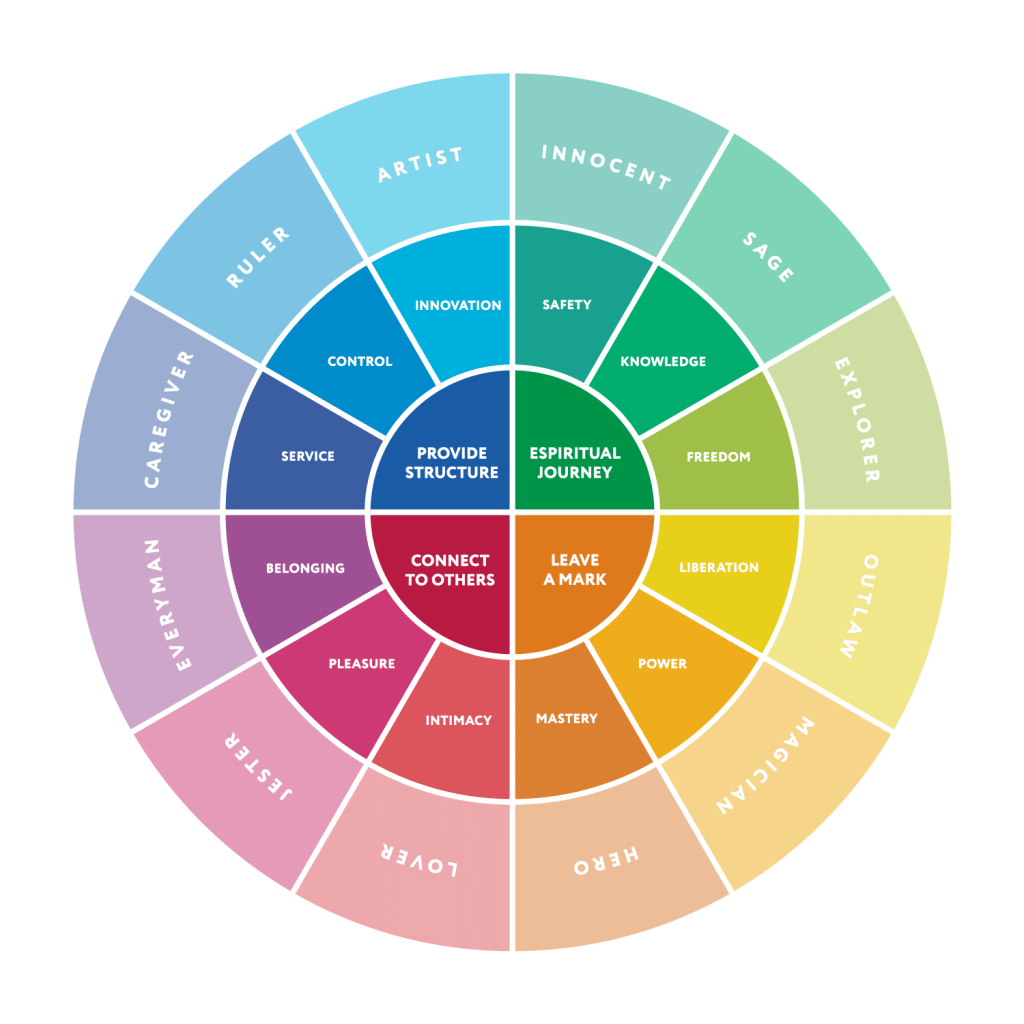
Carl Jung On Psychedelics
Jung himself wasn’t incredibly interested in psychedelics, and he never used them himself. But this was likely more a byproduct of the times than anything else. LSD, for example, wasn’t invented until 1938 by a Swiss chemist by the name of Albert Hofmann.
By then, Jung had already experienced deep bouts of delirium without the use of psychoactive substances and had delved deep into the exploration of the psyche. Jung would have been 63 when LSD was invented, and by the time he caught wind of it in the 1950s, he may have been too old to consider exploring the substance himself.
With that said, Jung was aware of psychedelics. He acknowledged them in 1954 in a letter to Victor White. He states that “it [LSD] has indeed very curious effects, of which I know far too little. I don’t know either what it’s psychotherapeutic value is with neurotic or psychotic patients. I only know there’s no point in wishing to know more of the collective unconscious than one gets through dreams and intuition. The more you know if it, the greater and heavier becomes your moral burden because the unconscious contents transform themselves into your individual tasks and duties as soon as they become conscious.”
Jung believed that for people who were too unconscious, it would be a great relief to learn about consciousness. However, if you’ve already seen glimpses of consciousness, it could become dangerous to know more.
He once issued a warning about the risks of using psychedelics — “beware of unearned knowledge.” This suggests that without taking things slowly, jumping too deep into the realm of the collective unconscious can lead to ontological shock and psychological dismemberment.
More recent discoveries, such as the concept of the default mode network (DMN) and reports of archetypal religious experiences and ego-dissolution, have many researchers finding parallels with Jung’s work.
The book he produced during his “manic years” — the Red Book — is especially of importance. This book explored uncharted domains that share a striking similarity to ideas involved with Indigenous cultures that explored consciousness with psychedelic substances like iboga, magic mushrooms, fly agaric mushrooms, and ayahuasca.
A book by Scott Hill titled Confrontation with the Unconscious: Jungian Depth Psychology and Psychedelic Experience explores the parallels between Jung’s ideas and the psychedelic experience.
Jung’s work served as inspiration for some of the most famous people in the world of psychedelics, including Alexander Shulgin, Alan Watts, Stanislav Grof, and Terence McKenna.
Terence McKenna referred to Jung as “A noetic archeologist — someone who goes with toothbrush and nutpick to dig away the detritus from the bones of vanished idea systems.”
Carl Jung Books
Carl Jung was a prolific author — publishing nearly 60 books throughout his life. The best place to read his collection of works is in the Princeton University Press 20-volume series titled The Collected Works of C. G. Jung.
Here are some of the most influential Carl Jung books:
- Psychiatric Studies (1902-1905)
- Psychology of the Unconscious (1912)
- Psychological Types (1921)
- The Archetypes and the Collective Unconscious (1934–1954)
- The Integration of the Personality (1940)
- Psychology and Alchemy (1944)
- Synchronicity: An Acausal Connecting Principle (1952)
- The Undiscovered Self (1957)
- Flying Saucers: A Modern Myth of Things Seen in the Skies (1959)
- The Red Book (2009)
Academic Publications
- Jung, C. G. (1921). Psychological types. The collected works of CG Jung, Vol. 6 Bollingen Series XX.
- Jung, C. G. (1923). On The Relation Of Analytical Psychology To Poetic Art 1. British Journal of Medical Psychology, 3(3), 213-231.
- Jung, C. G. (1928). Contributions to analytical psychology. New York: Harcourt Brace
- Jung, C. G. (1933). Modern man in search of his soul.
- Jung, C. G. (1947). On the Nature of the Psyche. London: Ark Paperbacks.
- Jung, C. G. (1948). The phenomenology of the spirit in fairy tales. The Archetypes and the Collective Unconscious, 9(Part 1), 207-254.
- Jung, C. G. (1953). Collected works. Vol. 12. Psychology and alchemy.
Carl Jung Quotes
Carl Jung has dropped a ton of wisdom throughout his life in the form of various books, academic papers, interviews, and lectures. Here are a couple of gems:
On Consciousness
People will do anything, no matter how absurd, to avoid facing their own souls.
The privilege of a lifetime is to become who you truly are.
There’s no coming to consciousness without pain.
Until you make the unconscious conscious, it will direct your life and you will call it fate.
You are what you do, not what you say you’ll do.
Beware of unearned wisdom.
Show me a sane man and I will cure him for you.
No tree, it is said, can grow to heaven unless its roots reach down to hell.
On Morality & Purpose
The pendulum of the mind oscillates between sense and nonsense, not between right and wrong.
As far as we can discern, the sole purpose of human existence is to kindle a light of meaning in the darkness of mere being.
Thinking is difficult; that’s why most people judge.
Knowing your own darkness is the best method for dealing with the darknesses of other people.
Your visions will become clear only when you can look into your own heart. Who looks outside, dreams; who looks inside, awakes.
Everything that irritates us about others can lead us to an understanding of ourselves.
I am not what happened to me; I am what I choose to become.
Loneliness does not come from having no people about one, but from being unable to communicate the things that seem important to oneself or from holding certain views which others find inadmissible.
Every form of addiction is bad, no matter whether the narcotic is alcohol, morphine, or idealism.
On Knowledge & Understanding
Where wisdom reigns, there is no conflict between thinking and feeling.
We cannot change anything unless we accept it.
In all chaos, there is a cosmos; in all disorder, a secret order.
Summary: Who Was Carl Jung?
Carl Jung was a Swiss psychologist and creator of analytical psychology. Through his work with Sigmund Freud and his own exploration and struggles with delirium, he created a complex pantheon of maps and explanations for the origins and nature of consciousness.
The depth and sheer volume of writings from Carl Jung have been a substantial contribution to the existing literature and ideas surrounding the origins of consciousness.
He’s famous for coining terms like extroversion and introversion, synchronicity, the collective unconscious, and shadow.
Jung was a visionary, considered well ahead of his time. His work is more reflective of modern practice but was less popular than his predecessor, Freud, at the time. His ideas have irrevocably influenced the fields of psychology, psychedelics, literature, and philosophy, and they continue to resonate with new innovators in the field of psychology and consciousness to this day.
His works are being revisited in the field of psychedelic study as researchers and philosophers explore the role of the default mode network, collectively shared visions, and the significance of dreams.
Subscribe To Get a Weekly Dose of Psychedelics In Your Inbox

